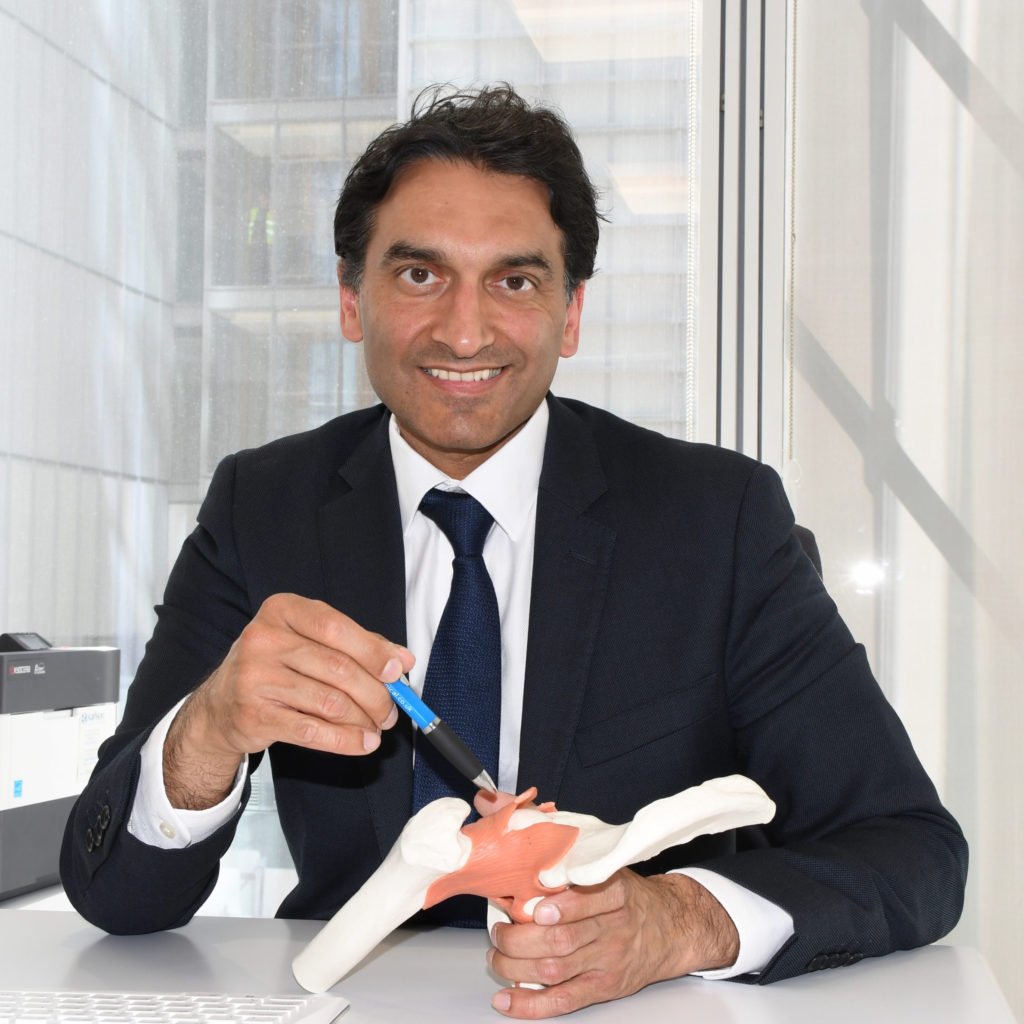
KNOW YOUR KNEE BLOG SERIES
The Anatomy of the Knee
Orthopaedic Opinions Blog
By Mr Vipin Asopa, March 2024
The knee is one of the major joints in our body. From walking to running, standing to sitting, the knee is there to support and stabilise our body in most of our daily activities.
“The knee is the body’s largest joint, and it has a fairly complex structure. This structure makes it possible for us to bend and straighten our knees, and to turn them slightly inward or outward.” [Reference: National Library of Medicine]
The knee is made up of bones, cartilage, ligaments and muscles. In this blog post, let’s look at the anatomy of the knee:
BONES

The knee connects the thigh bone (femur) which is above the knee, to the shin bone (tibia) located below the knee:
The other bone within the knee itself is the kneecap (patella).
Injuries and conditions – People can sustain fractures or breaks to the bones in the knee from sports or from a fall. Conditions include tibial plateau fractures.
Pain – A fracture or a break to a bone in the knee will cause pain.
CARTILAGE
The surfaces of the bone within the knee are lined with articular cartilage which is composed of type II collagen and proteoglycans.
Injuries and Conditions – Injuries to the knee include cartilage damage such as a meniscus tear. The NHS explain that “a meniscus tear usually happens when you twist your knee while playing sport. But it can also happen from more minor injuries such as twisting when standing up”. [Reference: https://www.nhs.uk/conditions/meniscus-tear/]
Osteoarthritis of the knee is a common condition where the articular cartilage becomes damaged and irregular due to breakdown of the collagen fibres. The surface of a healthy knee joint provides a smooth gliding pain free range of motion. In arthritis, the cartilage becomes damaged. There are a number of reasons why this can happen.
Pain – Osteoarthritis can cause knee pain. A meniscus tear will also cause pain in the knee.
LIGAMENTS

The knee is connected by four ligaments known as the medial collateral ligament, posterior cruciate ligament, anterior cruciate ligament and lateral collateral ligament.
Injuries and conditions – Ligament injuries in the knee are common. The main function of the anterior cruciate ligament (ACL) is to keep your knee stable. Unfortunately, ACL sprains and tears are common in sports with fast and sudden stops and pivoting movements, including football and skiing.
Pain – The knee may give way with an ACL injury which could cause pain.
MUSCLES
The quadriceps are a group of four muscles at the front of the thigh that do most of the work to extend the knee. The quadriceps are the strongest and leanest muscles in the entire body. The hamstring muscles are a collection of three muscles at the back of the thigh that affect hip and knee movement. These muscles begin behind the hip bone and attach to the tibia bone at the knee. [Reference: https://www.healthline.com/human-body-maps/knee-muscles#1]
Injuries and conditions – Strains and tears are injuries that can occur to either the quadricep or hamstring muscles. Conditions that affect the knee muscles include quadriceps injuries.
Pain – Depending on the severity, strains and tears will cause muscle pain.

Mr Vipin Asopa, PhD, FRCS (Tr & Orth), MBChB, BSc (hons)
Specialist Consultant Hip and Knee Surgeon in London, with a particular focus on hip pain, knee pain and sports injuries.
Mr Asopa performs numerous surgical procedures including hip and knee joint replacements, arthroscopy, ACL surgery, as well as treating arthritis, ligament injuries, trochanteric pain and more.
To book an appointment with Mr Asopa:
Call: +44 (0) 794 319 1592 | Email: admin@ortho-surgery.uk